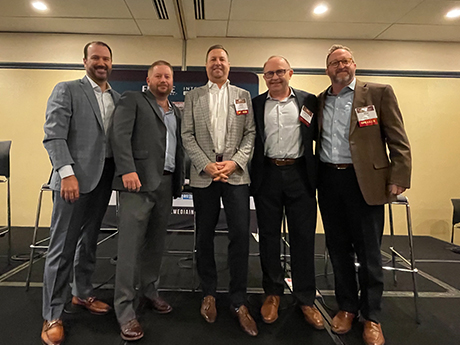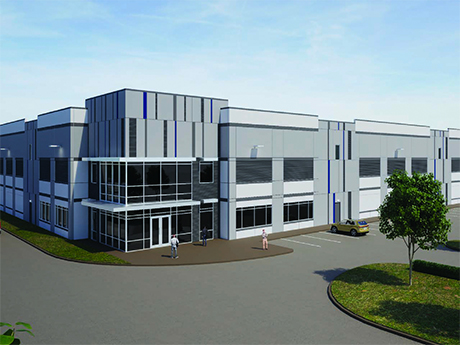By Taylor Williams
Tenant demand and availability of capital for industrial deals are still healthy in Texas, but end users and developers are demonstrating a clear push for smaller footprints in their leases and projects. This shift reflects a marked departure from recent years, when massive speculative facilities were financed without hesitation or preleasing and industrial users had little choice but to accept staggering levels of rent growth.
Spikes in interest rates bear some, but not all, blame for this emerging dynamic. Local and regional banks tend to be go-to debt providers on industrial projects, and these groups take defensive positions with their capital flows during high interest rate environments. And while reliance on e-commerce and third-party distribution remains deeply ingrained in consumer preferences, users still see value in rightsizing their footprints in today’s market.
As such, the industrial landscape is changing in Texas, where exceptionally strong population growth nonetheless ensures that the sector remains on very solid footing overall. But changes are undoubtedly happening. Large-scale spec facilities are being swapped for smaller build-to-suits, and manufacturing deals are taking up a larger share of the development pipeline. Lenders are tightening leverage and demanding more upfront equity for projects that they would have competed among themselves to finance just two years ago.
Such topics formed the basis of much of the discussion of the finance panel at the annual InterFace DFW & North Central Texas Industrial conference. Held in late August at the Renaissance Dallas Marriott hotel, the event was well-attended after having been on hiatus since 2019. Anton Mattli, co-founder and CEO of Peak Financing, a financial intermediary based in metro Dallas, moderated the panel discussion.
At the heart of the downsizing shift is the simple premise that lenders still want to finance industrial deals but also need to mitigate risk in the process. Enter simplicity of economics. Smaller projects inherently require fewer capital inputs — land, labor, construction materials — than their larger counterparts. Less principal is required to finance their construction, even if the interest rates on said principal are sky-high.
Slower overall leasing activity within large-scale industrial facilities is another reason that the pace of new development of these projects has slowed.
“The main hesitancy we see in the market involves big-bomber facilities in pockets [that have historically supported these projects] like South Dallas and certain parts of Fort Worth,” said panelist Matt Ballard, director of debt and structured finance at CBRE. “Smaller product has seen more consistent rent growth, interest from investors and available capital on the debt side.”

Ballard subsequently confirmed that with regard to development of large new projects, the slowdown was a factor of the capital markets, not the underlying fundamentals of industrial real estate. “We don’t see demand for industrial product in general slowing down, and the lack of new construction that we’re seeing right now could ultimately drive demand higher in the future,” he said.
Panelist Jason Piering, managing director at Dallas-based advisory firm Hamilton Realty Finance, then weighed in on the investment perspective for large-scale industrial product. His analysis extended to leasing velocity as well.
“A few years ago, when interest rates were so low and industrial was becoming a hot product and rents were taking off, big box product was very attractive,” he said. “There was a lot of capital out there, and it was nice and easy to deploy capital into one large box of 500,000 to 1 million square feet.
“There are still some tenants chasing those deals, but the costs of getting tenants into those space have increased,” Piering continued. “So leasing velocity has slowed. Those larger boxes are getting harder to fill, and those 100,000- to 250,000-square-foot buildings are in favor.”
Piering concluded his analysis by asserting that another pivot would soon be coming to the business of building massive industrial facilities: More capital will flow out of ground-up development and into value-add projects. While pricing on capital for those deals can still be a deal-breaker, he conceded, Piering contended that strong liquidity in the industrial value-add space is very much a thing.
Seth Koschak, executive managing director at Stream Realty Partners, was the next panelist to chime in on the state of industrial development in the region. Koschak posited the notion that the spectrum of small- to large-scale projects was akin to a risk curve in which the bigger one builds, the more risk one incurs.
Eighteen to 24 months ago, the opposite was mostly true, as large-scale projects with heavy-duty cash flows were basically required to effectively amortize high costs of land and construction. And that approach worked when rates were low.
“The pullback is directly correlated to where you are on the risk curve,” Koschak said. “Before all this happened, vacant buildings were en vogue, and location was secondary to just acquiring assets. Now it’s all about location and occupancy, and as you go further out on the risk curve, there’s going to be fewer buyers.”
Koschak also reiterated that getting equity to the table for large-scale projects can be particularly difficult in today’s environment. But without that equity, underwriting a big development from a debt perspective is somewhat of a lost cause. He concluded his remarks with a simple declaration on the current state of the market: “Smaller is better.”
Multiple panelists said they were encouraged by future implications of these shifts, namely that if demand holds steady — and everyone agreed it should — then the metroplex would be undersupplied in a couple years when interest rates are presumably less suffocating. That bodes well for properties’
cash-flowing prospects and should in theory allow lenders and owners to underwrite projects more aggressively and green-light them more quickly.
Panelist Brian Gramlich, CEO and founder of Terrydale Capital, a boutique financial intermediary based in Dallas, rounded out the discussion. His take hinged on the idea that in today’s climate, smaller industrial projects are more palatable with the key lending source for these developments: local banks.
“You can still get a big deal done with a different bucket of money, but for traditional construction financing, it’s the smaller banks that are active and liquid,” Gramlich said. “Deals are tougher to pencil out — return-on-cost expectations are higher, leverage is lower, debt is more expensive and construction costs haven’t moved a ton. But we’ve still seen success by being selective about what comes out of the ground.”
“Smaller projects are getting done with smaller banks, which had a hard time competing with large regional lenders when times were good,” concurred Piering. “Regional banks gobbled up all the deals, but that means that smaller banks don’t have that existing pipeline of construction deals that they’ve committed capital to and which haven’t fully stabilized. So small banks that lend below $20 million are active and taking advantage of the market.”
Piering added that his company is currently handling debt placement for several industrial projects in DFW for one sponsor. The first two are about 50,000 square feet and have received bids from multiple banks, he said, whereas the larger developments have had “very limited interest from capital sources.” ν


